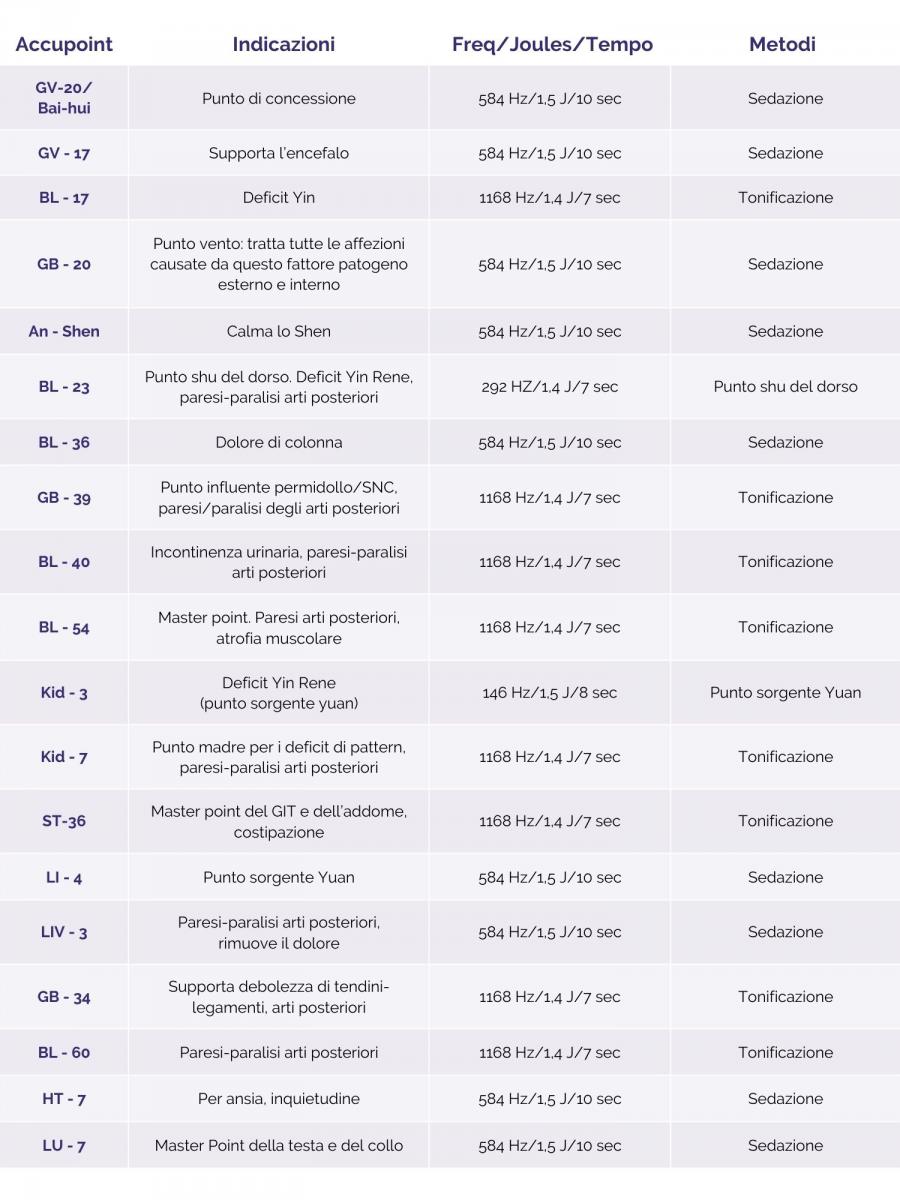SPECIES: Cat
BREED: European
GENDER: F
AGE: 6 years
NAME: Moxie
Clinical case
Suspected head and pelvic trauma resulting in ataxia, incoordination and difficulty lifting its hindquarters.
Previously treated with traditional therapy (NSAIDs, antibiotics and painkillers) with no clear improvement
Clinical examination
- Difficulty lifting its hindquarters, ataxia and incoordination
- Rhythmic head movements
- Altered sensorium: anxious and bad-tempered animal
- Mydriasis
- At gait it walks on tiptoe with slowed movements of the hind limbs. Able to take only a few steps alternating long pauses
- Hypomyotrophy of the hind limb muscles, especially the biceps femoris
- Intolerance with aggressive reaction to palpation of the spine and hind limbs
- Sphincter control (urinary and faecal continence); maintained appetite
TCVM (Traditional Chinese Veterinary Medicine) clinical exam
- State of the sensorium: sensitive, bad-tempered, unpredictable, does not cooperate during the exam (Constitution: Wood)
- Shen: Good
- Ear: sometimes cold – hot
- Tongue: Red-wet
- Pulse: rough
- Distal ends of hind limbs: hot-sweaty
- It moves easily when touched
- Body warm to the touch
- Prefers cool places and hiding under the bed
TCVM diagnosis
- Kidney Qi and Yin deficiency with blood stasis
Treatment
- Resolve Qi/blood stasis for a return to appropriate Qi/blood flow to reduce pain
- Tonify Kidney Yin to prevent recurring pain

Therapeutic protocol
- Duration of treatments: 5 months (total 10 sessions)
- Treatment frequency: once a week for 5 weeks then every 15 days for 3 times, finally once a month for 2 times
Results
- 2nd therapy:
- Head movements persist but are reduced
- Animal more energetic and active
- It holds its position for longer, walks several steps but on tiptoe
- Pupillary reflex present, no mydriasis
- Does not react angrily to palpation of the right hind limb
- 6th therapy:
- Head movements under control
- It doesn't fall to the ground when it shakes its head
- Initial tail wagging
- Inability to jump
- 7th therapy:
- Walks independently on all 4 limbs but still "tiptoeing" especially with the right hind limb
- A marked atrophy and muscle tremor persists
- Dry and small wound
- 8th and 9th therapy:
- Able to take its position independently, to walk and run slowly on all 4 limbs, a slight ataxia persists
- Hind limbs brought into the correct position whilst taking a step, capable of increasing its pace if the movement occurs along a wall
- Ability to jump onto the sofa
- Improved muscle tone
- Weight increase (from 3.05 kg to 3.65 kg)
- Still bad-tempered and uncooperative with tests and treatments
Courtesy of Dr Wahyu Widyayandani - Semer Vet Clinic, Indonesia
